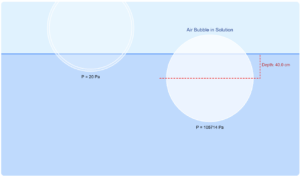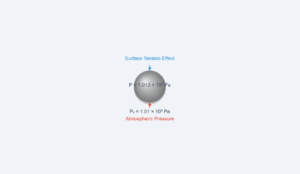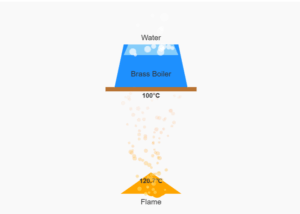Molar Specific Heat Simulation
Visualizing degrees of freedom in monatomic and diatomic gases
This interactive simulation demonstrates the relationship between molecular degrees of freedom and molar specific heat capacity (Cv). Compare different gases and observe how additional modes of motion (translation, rotation, vibration) contribute to higher heat capacity values.
| Gas | Molar Specific Heat (Cv) | Degrees of Freedom | Theoretical Cv = (f/2)R |
|---|---|---|---|
| Monatomic | 2.92 cal mol-1 K-1 | 3 (translational) | (3/2)R = 2.97 cal/mol·K |
| Hydrogen (H₂) | 4.87 cal mol-1 K-1 | 5 (3 trans + 2 rot) | (5/2)R = 4.95 cal/mol·K |
| Nitrogen (N₂) | 4.97 cal mol-1 K-1 | 5 (3 trans + 2 rot) | (5/2)R = 4.95 cal/mol·K |
| Oxygen (O₂) | 5.02 cal mol-1 K-1 | 5 (3 trans + 2 rot) | (5/2)R = 4.95 cal/mol·K |
| Chlorine (Cl₂) | 6.17 cal mol-1 K-1 | 7 (3 trans + 2 rot + 2 vib) | (7/2)R = 6.93 cal/mol·K |
Physics Explanation
The molar specific heat at constant volume (Cv) depends on the number of degrees of freedom (f) available to the gas molecules, according to the equipartition theorem: Cv = (f/2)R, where R is the gas constant (1.98 cal mol-1 K-1).
Monatomic gases (like Argon) have only 3 translational degrees of freedom (movement in x, y, z directions).
Diatomic gases (like H₂, N₂, O₂) have 3 translational + 2 rotational degrees of freedom at room temperature (rotation about the bond axis doesn't count in quantum mechanics).
Chlorine (Cl₂) shows higher Cv because its heavier atoms allow vibrational modes to contribute even at room temperature, adding 2 more degrees of freedom (kinetic and potential energy of vibration).
The slight discrepancies between theoretical and experimental values arise from quantum effects that prevent full equipartition at certain temperatures.



